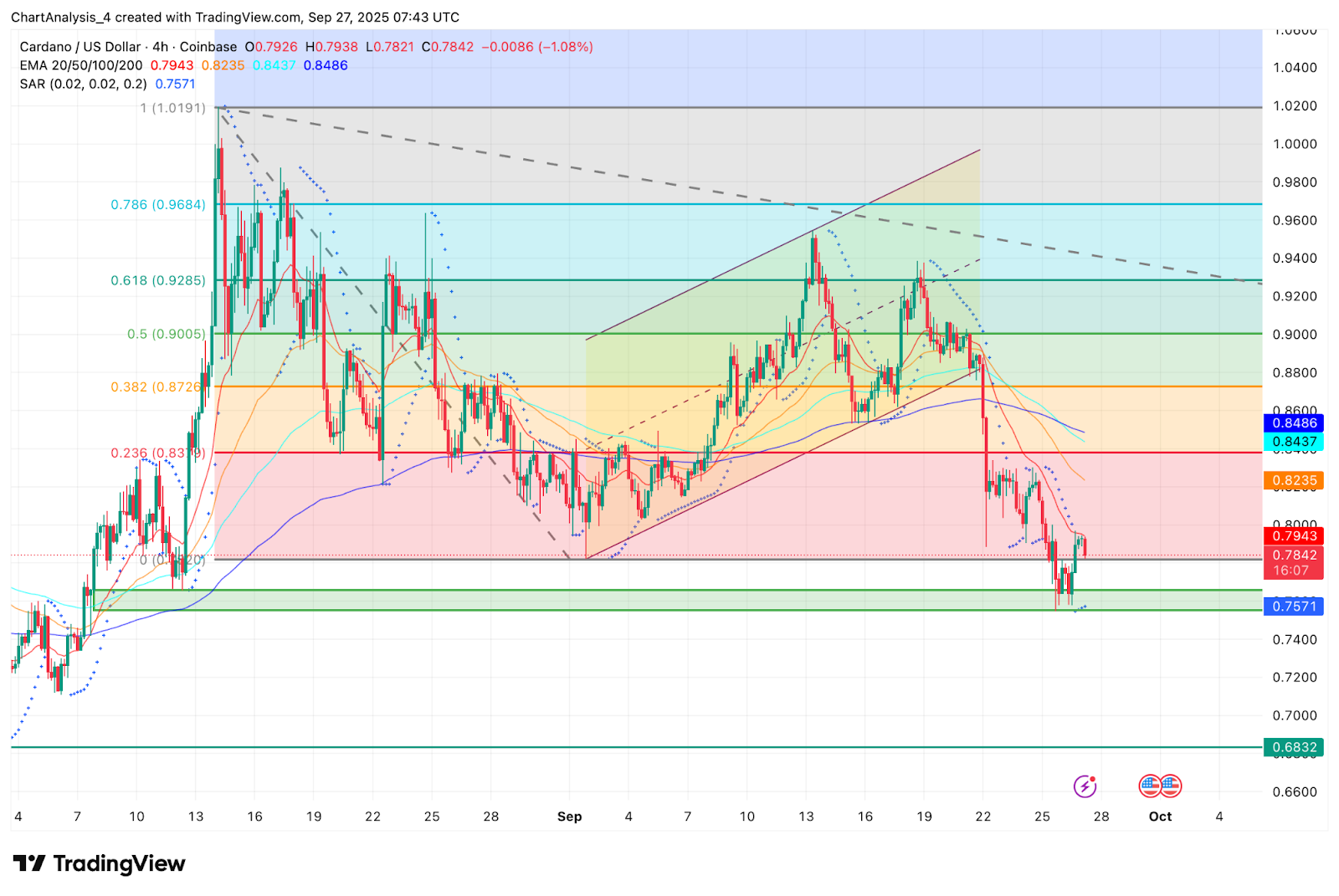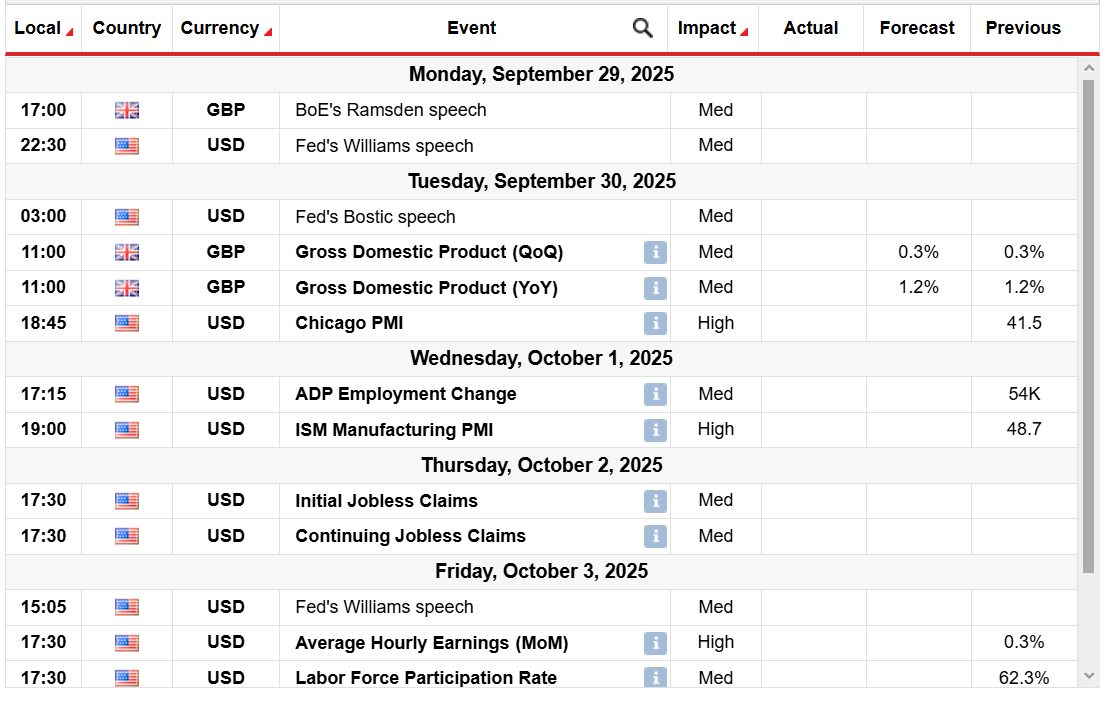Category: Forex News, News
Euro shows no signs of an extended recovery
- EUR/USD corrects higher following a sharp two-day decline.
- The near-term technical outlook doesn’t offer any hints of a reversal.
- The US economic calendar will feature PCE inflation data for August.
EUR/USD continued to push lower following Wednesday’s decline and closed deep in negative territory on Thursday. The pair stays relatively quiet in the European session on Friday, while the technical outlook suggests that the bearish bias remains intact.
Euro Price Today
The table below shows the percentage change of Euro (EUR) against listed major currencies today. Euro was the weakest against the US Dollar.
| USD | EUR | GBP | JPY | CAD | AUD | NZD | CHF | |
|---|---|---|---|---|---|---|---|---|
| USD | -0.03% | -0.01% | -0.04% | 0.09% | 0.08% | 0.17% | 0.03% | |
| EUR | 0.03% | 0.05% | 0.05% | 0.17% | 0.17% | 0.27% | 0.08% | |
| GBP | 0.01% | -0.05% | 0.08% | 0.13% | 0.21% | 0.21% | 0.00% | |
| JPY | 0.04% | -0.05% | -0.08% | 0.10% | 0.09% | 0.18% | -0.08% | |
| CAD | -0.09% | -0.17% | -0.13% | -0.10% | -0.01% | 0.11% | -0.13% | |
| AUD | -0.08% | -0.17% | -0.21% | -0.09% | 0.01% | 0.09% | -0.13% | |
| NZD | -0.17% | -0.27% | -0.21% | -0.18% | -0.11% | -0.09% | -0.10% | |
| CHF | -0.03% | -0.08% | 0.00% | 0.08% | 0.13% | 0.13% | 0.10% |
The heat map shows percentage changes of major currencies against each other. The base currency is picked from the left column, while the quote currency is picked from the top row. For example, if you pick the Euro from the left column and move along the horizontal line to the US Dollar, the percentage change displayed in the box will represent EUR (base)/USD (quote).
The US Dollar (USD) gathered strength against its rivals on Thursday as upbeat macroeconomic data releases eased concerns over an economic downturn.
The US Bureau of Economic Analysis (BEA) announced that it revised the annualized Gross Domestic (GDP) growth for the second quarter to 3.8% from 3.3% in the previous estimate. Other data from the US showed that Durable Goods Orders increased by 2.9% in August, surpassing the market expectation for a decrease of 0.5% by a wide margin, and the weekly Initial Jobless Claims declined to 218,000 from 232,000 in the previous week.
Later in the day, the BEA will publish the Personal Consumption Expenditures (PCE) Price Index data, the Federal Reserve’s (Fed) preferred gauge of inflation, for August. Fed Chairman Jerome Powell said in his last public appearance that they were projecting the PCE Price Index and the core PCE Price Index to rise 2.7% and 2.9% on a yearly basis, respectively.
Unless there is a significant surprise in the monthly core PCE Price Index print, which is expected to rise 0.2%, the market reaction is likely to remain muted.
In the meantime, US stock index futures rise about 0.2% in the European morning on Friday. A bullish action in Wall Street could help EUR/USD hold its ground heading into the weekend.
EUR/USD Technical Analysis
EUR/USD broke below the lower limit of the ascending regression channel and the Relative Strength Index (RSI) indicator on the 4-hour chart dropped toward 30, reflecting a buildup of bearish momentum. Additionally, EUR/USD closed the last four 4-hour candles below the 200-period Simple Moving Average (SMA).
On the downside, 1.1640 (Fibonacci 50% retracement of the latest uptrend) aligns as the first support level before 1.1580 (Fibonacci 61.8% retracement) and 1.1500 (static level, round level). Looking north, resistance levels could be spotted at 1.1690-1.1700 (200-period SMA, Fibonacci 38.2% retracement), 1.1750 (100-period SMA) and 1.1770 (Fibonacci 23.6% retracement).
(This story was corrected on September 26 at 08:38 GMT to say in the first paragraph that the EUR/USD closed deep in negative territory on Thursday, not positive.)
Euro FAQs
The Euro is the currency for the 19 European Union countries that belong to the Eurozone. It is the second most heavily traded currency in the world behind the US Dollar. In 2022, it accounted for 31% of all foreign exchange transactions, with an average daily turnover of over $2.2 trillion a day.
EUR/USD is the most heavily traded currency pair in the world, accounting for an estimated 30% off all transactions, followed by EUR/JPY (4%), EUR/GBP (3%) and EUR/AUD (2%).
The European Central Bank (ECB) in Frankfurt, Germany, is the reserve bank for the Eurozone. The ECB sets interest rates and manages monetary policy.
The ECB’s primary mandate is to maintain price stability, which means either controlling inflation or stimulating growth. Its primary tool is the raising or lowering of interest rates. Relatively high interest rates – or the expectation of higher rates – will usually benefit the Euro and vice versa.
The ECB Governing Council makes monetary policy decisions at meetings held eight times a year. Decisions are made by heads of the Eurozone national banks and six permanent members, including the President of the ECB, Christine Lagarde.
Eurozone inflation data, measured by the Harmonized Index of Consumer Prices (HICP), is an important econometric for the Euro. If inflation rises more than expected, especially if above the ECB’s 2% target, it obliges the ECB to raise interest rates to bring it back under control.
Relatively high interest rates compared to its counterparts will usually benefit the Euro, as it makes the region more attractive as a place for global investors to park their money.
Data releases gauge the health of the economy and can impact on the Euro. Indicators such as GDP, Manufacturing and Services PMIs, employment, and consumer sentiment surveys can all influence the direction of the single currency.
A strong economy is good for the Euro. Not only does it attract more foreign investment but it may encourage the ECB to put up interest rates, which will directly strengthen the Euro. Otherwise, if economic data is weak, the Euro is likely to fall.
Economic data for the four largest economies in the euro area (Germany, France, Italy and Spain) are especially significant, as they account for 75% of the Eurozone’s economy.
Another significant data release for the Euro is the Trade Balance. This indicator measures the difference between what a country earns from its exports and what it spends on imports over a given period.
If a country produces highly sought after exports then its currency will gain in value purely from the extra demand created from foreign buyers seeking to purchase these goods. Therefore, a positive net Trade Balance strengthens a currency and vice versa for a negative balance.
Written by : Editorial team of BIPNs
Main team of content of bipns.com. Any type of content should be approved by us.
Share this article:













